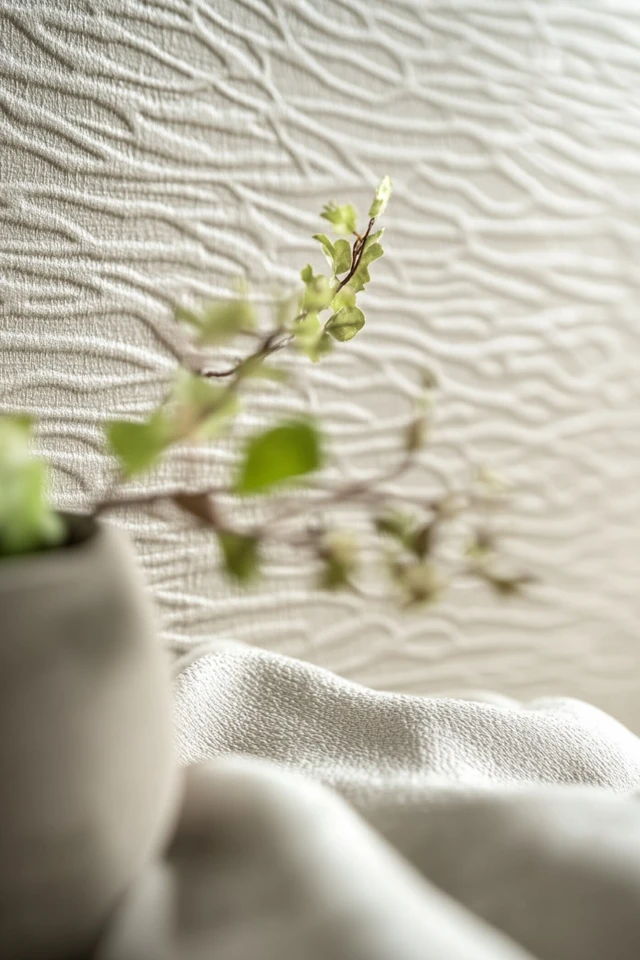Minimalist interiors are all about clean lines, simplicity, and an uncluttered aesthetic, but that doesn’t mean they have to be devoid of personality. Incorporating subtle patterns is a brilliant way to add depth, texture, and visual interest to a minimalist space while maintaining its calm and balanced vibe.
I’ll admit, I used to shy away from patterns in minimalist design—afraid they might overwhelm the serene look I love so much. But when I experimented with a barely-there geometric rug in my living room, it completely transformed the space without compromising its minimalist essence. It felt fresh, layered, and suddenly, much more dynamic.
If you’re curious about how to seamlessly weave subtle patterns into your minimalist interiors, keep reading for practical tips and creative inspiration.
Why Patterns Work in Minimalist Interiors
- Add Visual Interest: Patterns prevent minimalist spaces from feeling flat or sterile.
- Enhance Texture: Subtle patterns bring a tactile quality that complements sleek furniture and smooth finishes.
- Create Layers: Patterns can subtly differentiate areas in open-plan spaces.
- Maintain Balance: Unlike bold patterns, subtle designs integrate beautifully into a minimalist aesthetic.
1. Start Small With Textiles
Why It Works:
Textiles like rugs, pillows, and throws are the easiest way to introduce patterns without overwhelming your space.
How to Incorporate It:
- Choose throw pillows with tone-on-tone geometric patterns or delicate stripes.
- Use a rug with a neutral color palette and a subtle pattern, such as herringbone or a faded Moroccan design.
- Add a waffle-weave or striped throw blanket to a neutral sofa or bed.
Pro Tip: Stick to patterns with muted colors or monochromatic designs to keep the minimalist vibe intact.
2. Incorporate Patterns Through Wall Art
Why It Works:
Wall art with subtle patterns can act as a focal point without cluttering your walls or overwhelming the space.
How to Incorporate It:
- Hang abstract art with soft, repeating shapes or delicate line work.
- Opt for black-and-white prints with minimal patterns, like dots or grids.
- Try a single piece of textured wall art, such as a woven tapestry or embossed canvas.
Pro Tip: Keep frames simple and stick to a cohesive palette for a minimalist look.
3. Play With Patterned Accents in Furniture
Why It Works:
Furniture with understated patterns can add character while keeping the space grounded in minimalist principles.
How to Incorporate It:
- Choose an upholstered armchair or bench with a neutral, patterned fabric, such as a small chevron or pinstripe.
- Opt for a coffee table or console with a subtly textured surface, like wood grain or concrete.
- Look for chairs or stools with patterned woven seats or backs for a functional yet stylish accent.
Pro Tip: Pair patterned furniture with solid, muted pieces to maintain a balanced aesthetic.
4. Use Patterns in Curtains and Window Treatments
Why It Works:
Patterned curtains or blinds can subtly frame your windows, adding softness and dimension to the space.
How to Incorporate It:
- Choose sheer curtains with a delicate embroidered design or geometric motif.
- Opt for Roman shades with tone-on-tone stripes or a subtle herringbone print.
- Stick to neutral hues like beige, gray, or white to ensure the patterns don’t dominate the room.
Pro Tip: Keep the rest of the room’s decor simple to let the patterned window treatments shine.
5. Introduce Patterns Through Wallpaper or Wall Finishes
Why It Works:
A single accent wall with a subtle pattern can add depth to a minimalist space without overwhelming it.
How to Incorporate It:
- Use wallpaper with a faint geometric design or a soft, natural motif like branches or clouds.
- Choose textured wall panels, such as shiplap or wood slats, for a three-dimensional effect.
- Try a painted feature wall with a tone-on-tone stencil or ombré finish for a subtle twist.
Pro Tip: Stick to one patterned wall per room to maintain the minimalist aesthetic.
6. Incorporate Patterns With Functional Accessories
Why It Works:
Everyday items like dinnerware, planters, or storage baskets are an easy way to introduce subtle patterns into your space.
How to Incorporate It:
- Use patterned ceramic planters with soft, organic designs.
- Choose kitchen towels or table linens with simple stripes or grids.
- Incorporate woven baskets with subtle patterns for stylish storage.
Pro Tip: Mix and match accessories with solid-colored items for a curated, minimalist look.
7. Layer Patterns With Natural Materials
Why It Works:
Natural textures like wood grain, stone veining, and woven fibers often feature inherent patterns that complement minimalist decor.
How to Incorporate It:
- Highlight a marble countertop or backsplash with subtle veining.
- Choose wood furniture with visible grain patterns for a natural touch.
- Add woven rattan or cane furniture to introduce organic, textural patterns.
Pro Tip: Stick to materials in light or medium tones to maintain a soft, minimalist feel.
8. Opt for Monochromatic Patterns
Why It Works:
Monochromatic patterns add depth and texture while blending seamlessly into minimalist interiors.
How to Incorporate It:
- Choose bedding or duvet covers with subtle, tone-on-tone patterns like polka dots or pinstripes.
- Look for patterned rugs in shades of gray, beige, or white.
- Use monochromatic wallpaper with faint geometric designs for an understated accent.
Pro Tip: Monochromatic patterns are perfect for layering with other textures without disrupting the minimalist color scheme.
9. Combine Patterns With Solid Colors
Why It Works:
Balancing patterns with solid-colored elements ensures the room remains cohesive and uncluttered.
How to Incorporate It:
- Pair a patterned throw blanket with solid-colored pillows.
- Use a patterned rug under a plain sofa or coffee table.
- Combine a patterned feature wall with solid furniture and decor.
Pro Tip: Limit the number of patterns to one or two per room to maintain the minimalist aesthetic.
Picture Gallery
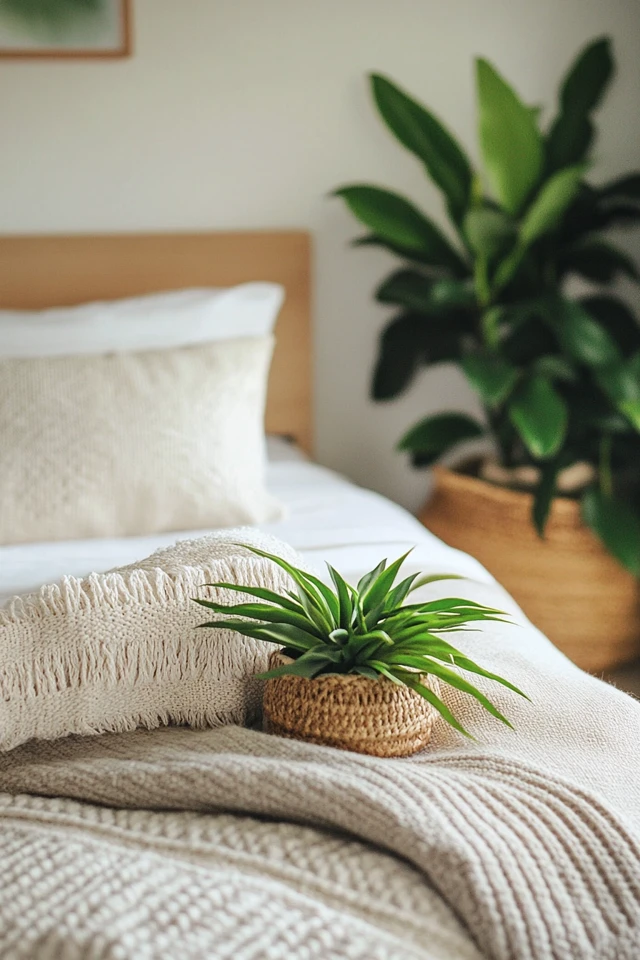
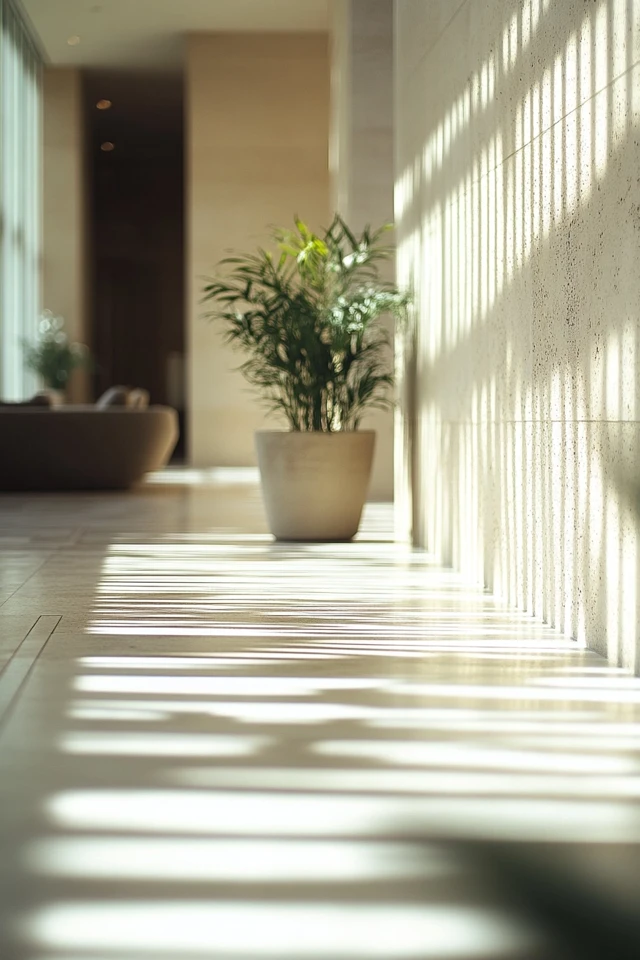
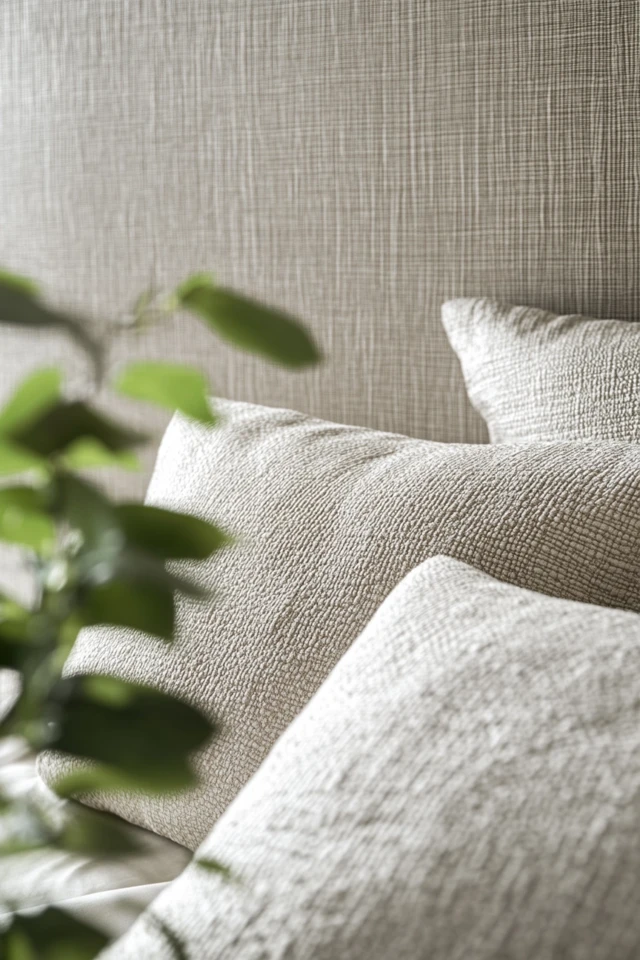

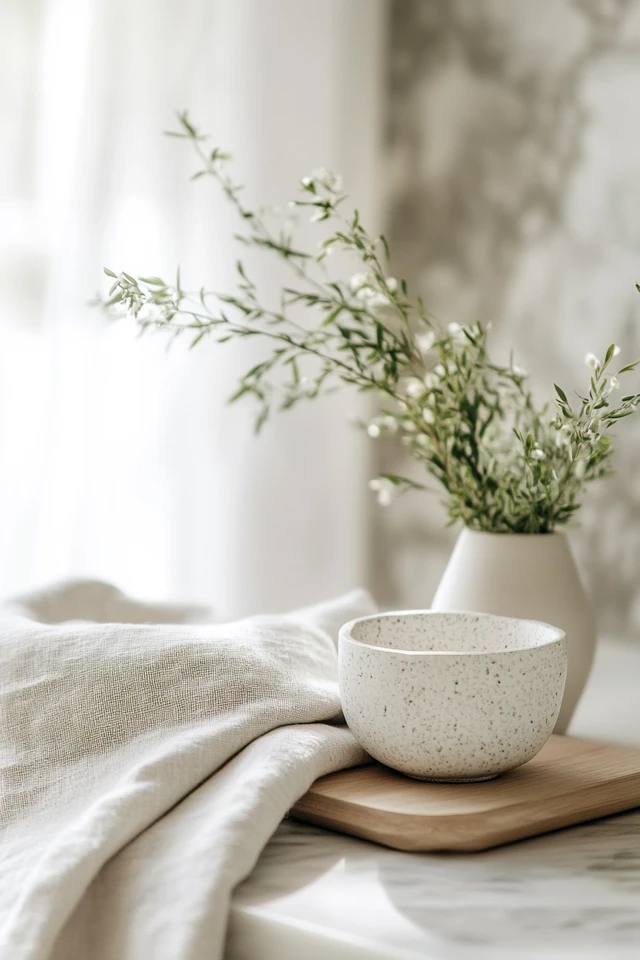
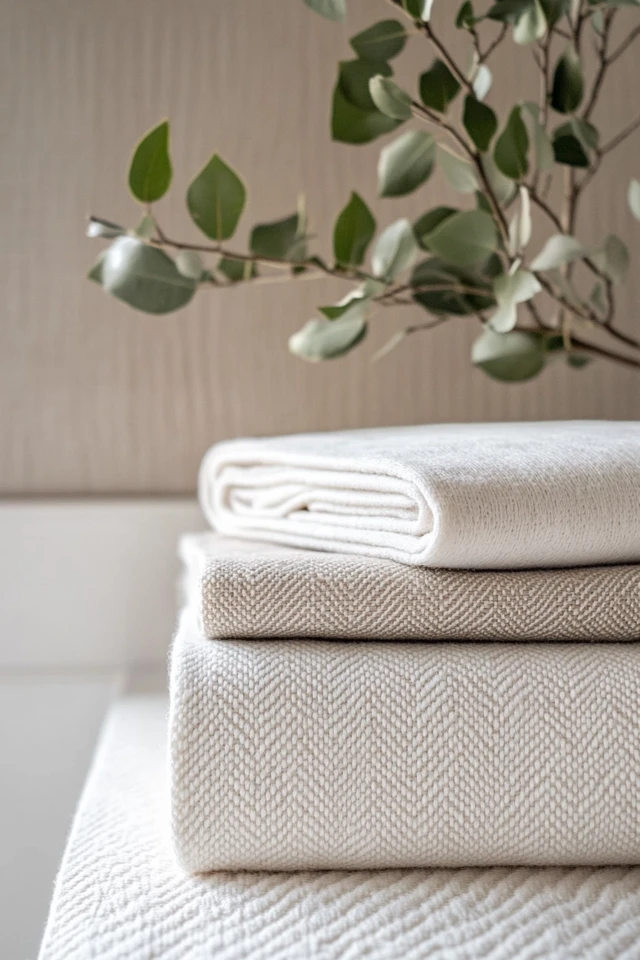
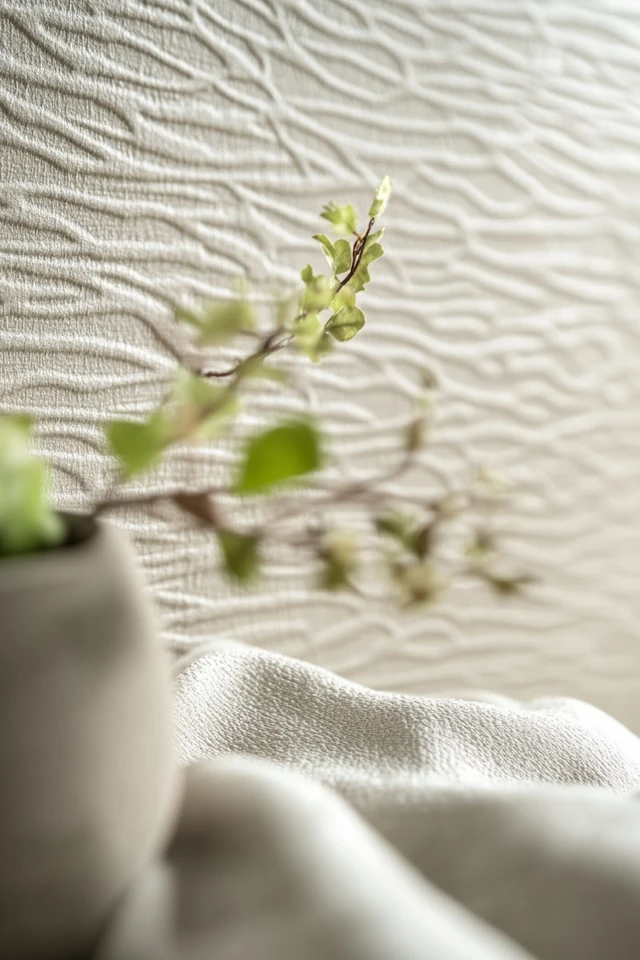
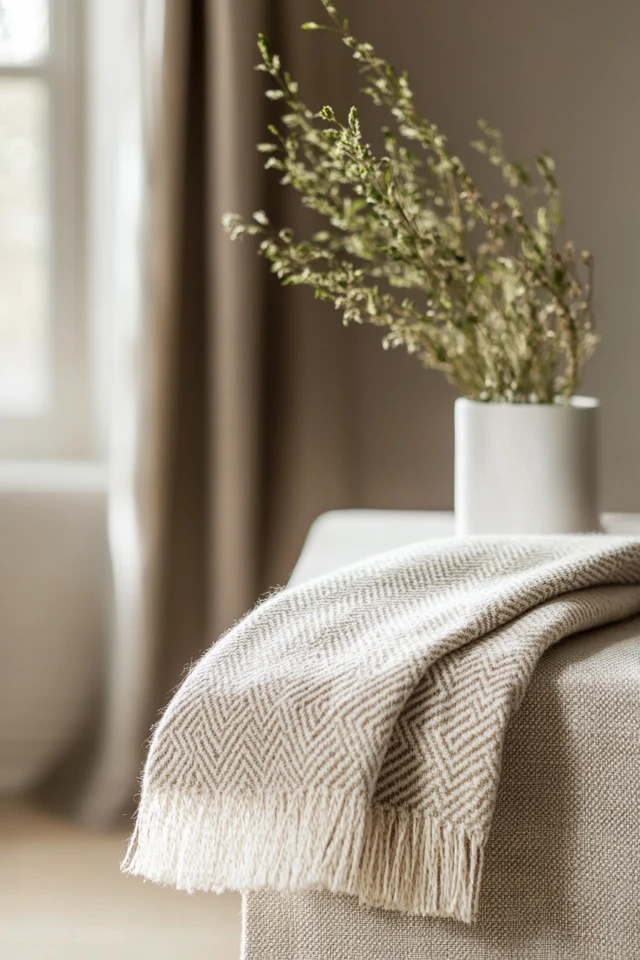
Conclusion
Incorporating subtle patterns into minimalist interiors is a great way to add depth, texture, and character while staying true to the clean, uncluttered aesthetic you love. Whether through textiles, furniture, or natural materials, the key is to choose patterns that are understated and harmonious with your overall design.
Remember, minimalist interiors are all about balance. By pairing patterns with solid colors and sticking to a neutral palette, you can create a space that feels warm, inviting, and effortlessly stylish. So go ahead, embrace subtle patterns—and watch your minimalist home come to life.
FAQs
1. Can I use bold patterns in a minimalist space?
Bold patterns can work in moderation, but keep them confined to one accent piece, like a rug or a single throw pillow, to avoid overwhelming the space.
2. What colors work best for subtle patterns in minimalist interiors?
Stick to neutral colors like white, gray, beige, and muted pastels. Tone-on-tone patterns are also a great choice for a seamless look.
3. How can I mix patterns in a minimalist space?
Combine patterns with different scales—like a large, geometric rug with small, subtle stripes on a throw pillow. Stick to a cohesive color palette to keep the look balanced.
4. Can I use patterned furniture in minimalist decor?
Yes! Choose furniture with understated patterns or textures, like pinstriped upholstery or cane detailing, to add interest without overpowering the space.
5. What’s the easiest way to start incorporating patterns into a minimalist space?
Begin with small items like throw pillows, rugs, or wall art. These elements are easy to swap out if you want to experiment with different patterns.

